Fertilizing apple trees and other fruit trees will keep your orchard healthy and productive. But knowing when to fertilize and how to do it organically can be confusing. These tips will give clarity.
When we first planted our zone 3 orchard things didn’t turn out the way we expected. We planted whips that were grafted on hardy Russian dwarf stock and expected to see fruit in about 5 years. But 8 years later we were still waiting. The trees hadn’t grown the way we expected. There were losses but not from hard winters. The losses came in wet springs. Often just as the blossoms were opening the tree would die back.
We consulted a friend with heritage apple trees and she advised us to use fruit tree spikes to fertilize our apple trees. But obtaining fruit tree spikes required a trip to a garden centre a 3 hour drive from home. A few years ago we started over with fresh apple trees and a lot more understanding of the unique needs of fruit trees growing in the hard northern climate. Unfortunately, we lost 8 years in orchard production, although we gained several lessons.
Know what kind of growth to expect from your fruit trees
A healthy young fruit tree will grow 18 to 24 inches in a growing season. That’s about 4 to 6 inches between April 15 and June 1st. If you are seeing that kind of growth, you don’t need to fertilize. Your young fruit trees are getting what they need from the soil they’re in. If your fruit tree is 3 years old you will expect it to grow about 20 inches a year (50 cm.), or 5 inches between April 15 and June 1st.
But if you are seeing little growth on the tips of the branches this year, or if last year’s growth fell short of the expected 18 to 24 inches (45 to 60 cm), your fruit trees need nitrogen.
Too much nitrogen isn’t better
If a little nitrogen promotes better growth and healthier apple trees, you may think that applying a lot of nitrogen is better. But that’s not necessarily the case. Too much nitrogen can damage your fruit trees just as much as too little nitrogen. Fruit trees, just like vegetables, need a balanced diet of nitrogen, phosphorus, and potassium, plus several trace minerals to thrive. If they already have the right amount of fertility where they are planted, adding extra nitrogen can promote excessive soft growth that is easily damaged in winter, possibly killing the tree. Adding excess nitrogen can also cause nutrient deficiencies which can harm the tree. Getting the balance right is important.
Too much nitrogen can prevent fruiting and flowering and might even damage the roots of your trees.
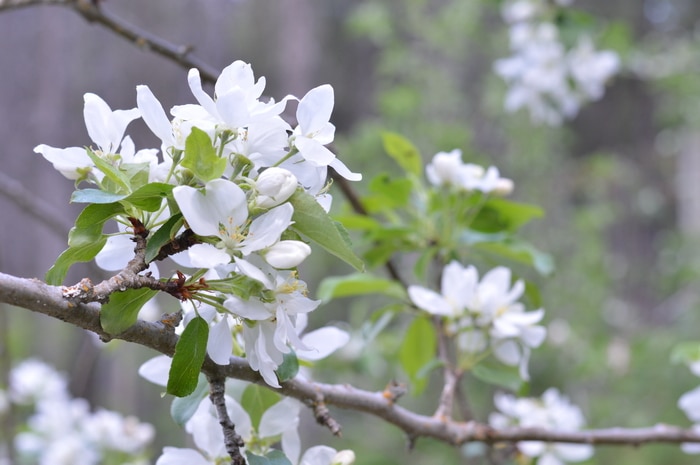
Get the amount of nitrogen right
If your young tree had 24 inches of growth in the preceding year, there is no need to add additional fertilizer.
If your young tree had 12 to 15 inches of growth in the preceding year or 2 to 3 inches of growth between April 15 and June 1, adding a moderate amount of nitrogen will be helpful.
If your young tree has only 2 inches of growth in the preceding year, it needs a full dose of nitrogen at the beginning of the growing season. Use fertilizer package guidelines as your rule in this case.
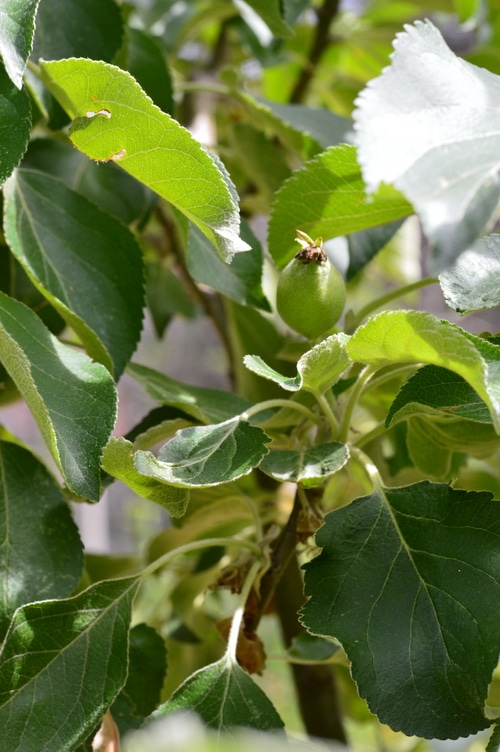
Organic products for fertilizing apple trees
When you shop for fertilizer you don’t want a product that is 100% nitrogen. Instead, you’ll choose a natural, organic fertilizer that is nitrogen rich but also contains other nutrients. Products sold as fertilizers have an N-P-K rating expressed in numbers. (N=Nitrogen, P=Phosphorus, and K=Potassium). If a product has a rating of 9-3-0, as fish meal does, it means it has 9% nitrogen, 3% phosphorus, and no potassium. Nitrogen promotes green, leafy growth. Phosphorus promotes root development and flowering. Potassium helps with fruiting and seed development.
Fish Fertilizer
As I already mentioned, fish fertilizer has a rating of 9-3-0. It is useful in young orchards where the trees are slow to grow, early in the season. I learned from my First Nation family to bury fish heads and entrails in the garden where I planted corn. Fish fertilizer is neater than raw fish heads but just as smelly. It’s good to apply it just before the rain so that the smell is washed deeply into the soil and doesn’t bother the neighbours or attract stray cats or raccoons.
Alfalfa Meal
Alfalfa meal can be found at the garden center and also at the feed store. It has a rating of (2-1-2). We mulch our garden and fruit trees with alfalfa hay, which breaks down over the growing season, feeding the trees and the vegetables with both nitrogen and potassium. Alfalfa meal releases nitrogen more quickly than the hay. Apply it in May, if your fruit trees are slow growing.
Blood Meal
Blood Meal can be found at the garden center. It has a rating of 12-0-0 and is a by product of the meat industry. Use it to give trees a nitrogen boost early in the season. Apply it just before the rain to wash it into the soil. Follow the directions on the package so that you don’t over apply it.
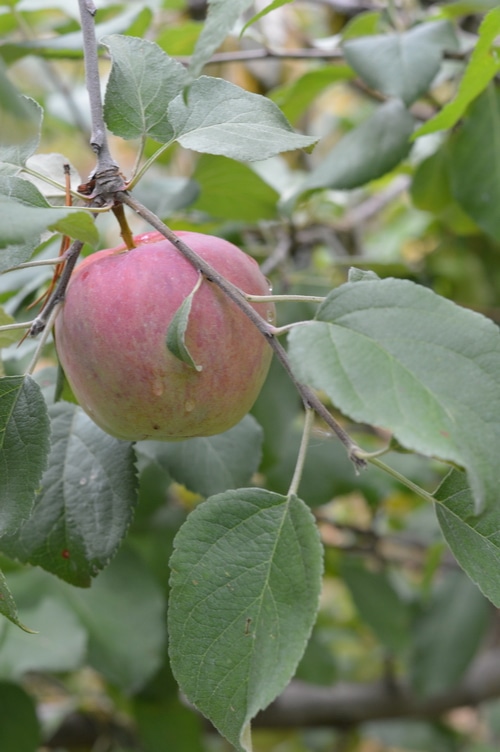
When to apply an organic fertilizer to apple trees
Adding fertilizer to apple trees should be done 3 times during the growing season.
- Make the first application in early spring, before flowering, around mid April in most areas temperate areas.
- Make the second application about a month later, after flowering is completed around the end of May.
- And the final application of fertilizer should be applied at the end of June, about a month after the second application.
Follow the directions on the fertilizer box. If the fertilizer gives an annual application rate, divide this by 3 to find out how much fertilizer to add with each application.
Don’t add any nitrogen rich fertilizer after July 1st
Adding nitrogen fertilizer later in the season can prevent the trees from going into dormancy as winter comes on. This can cause damage to the trees in the cold season. Instead, wait till spring to apply the fertilizer if you missed the opportune window. You can still add mulch to the trees as the mulch breaks down slowly and won’t promote lush, tender growth later in the season.
Mulching when fertilizing apple trees
Mulch improves the soil by increasing organic matter, improving soil texture, and increasing soil micro-organisms. As the soil health improves the need for soil amendments like nitrogen fertilizers lessens. Mulching also retains moisture at the soil level, reducing the need for supplemental water. Mulch keeps competing weeds and grass away from the drip zone of fruit trees and makes maintaining the tree easier.
Adding 2 inches of nitrogen rich mulch in the early spring as a top dressing on all your fruit trees, give the tree a burst of nutrition just when they need it most. This is the best time to add alfalfa hay, compost, or well rotted manure.
When adding alfalfa hay, grass hay, well rotted manure, leaf mold, or bark mulch to the soil surface around young trees, it’s important to keep the mulch well away from the trunk of the tree. Air needs to get to the trunk. Mulch in the shape of a donut, keeping the mulch at a distance from the trunk and mounding it in the drip zone.
Growing Urban Orchards
I found Susan Poizner’s book Growing Urban Orchards, How to Care for Fruit Trees in the City and Beyond very helpful in learning the tips and tricks for nurturing fruit trees in the colder areas of the country. Susan established fruit trees in urban Toronto (USDA zone 5) in 2009. Her book is focused on bring fruitfulness, reestablishing pollinators, and providing healthy food through establishing urban orchards.
Her information is easily accessible for the home gardener, homesteader, and permaculture gardener and covers the basics of fruit tree care from choosing trees that will do well in your hardiness zone to preparing the planting hole, fertilizing fruit trees, and protecting them from pests and human marauders.
Susan is a community fruit tree expert and a leader in Growing for Green, a community group that plants orchards in and around the Toronto area. While her book focuses on her experience in Toronto, she includes suggestions on growing fruit trees in different regions and explains how to research solutions that will work for you, where you live.
My favourite part of the book was reading the stories of other urban orchard projects in zones 3 (Calgary, Alberta) to zone 8 (Richmond, BC and Seattle, Washington). The stories of community and partnership, between growing food and using food in the community were inspirational.
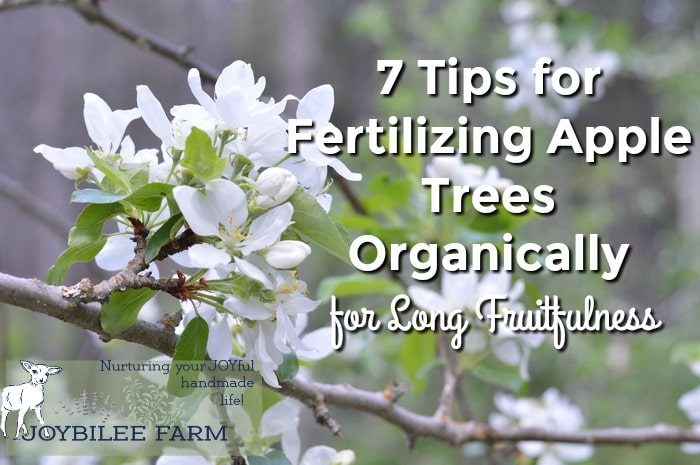
The book though isn’t just for community groups who want to add fruit trees to community gardens, parks, and public lands. This book explains how to care for fruit trees in intimate detail and is valuable for the home gardener and homesteader as well.
Growing Urban Orchards won the 2014 Silver Award from the Garden Writers Association Media Awards.
You can get your copy here.
Disclosure: I received a copy of this book for review purposes from “Book Publishing, Co”.


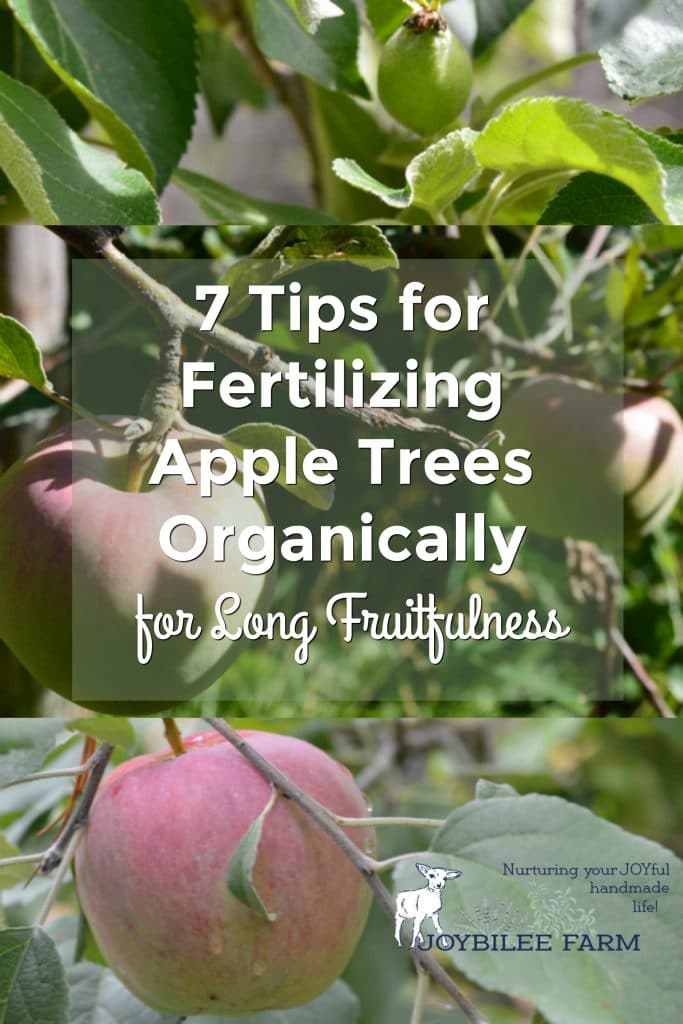
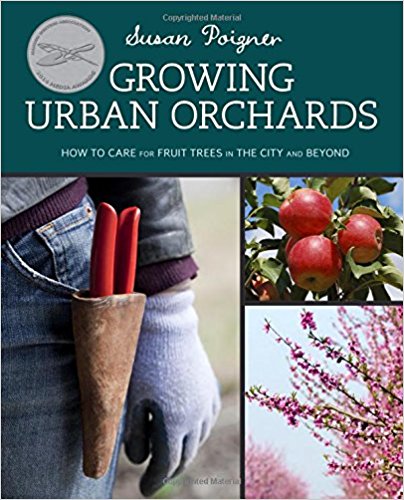

Well done. Thank you for sharing.
This is a great post and would love to see one on other trees like peaches.
Hi Chris, a lot of the organic alfalfa pellets have a lot of salt and sugar. Ask before you buy. Jonica
i have apple tree there is a flower now but it does not continous to fruit the flowers are falling. what will i do?